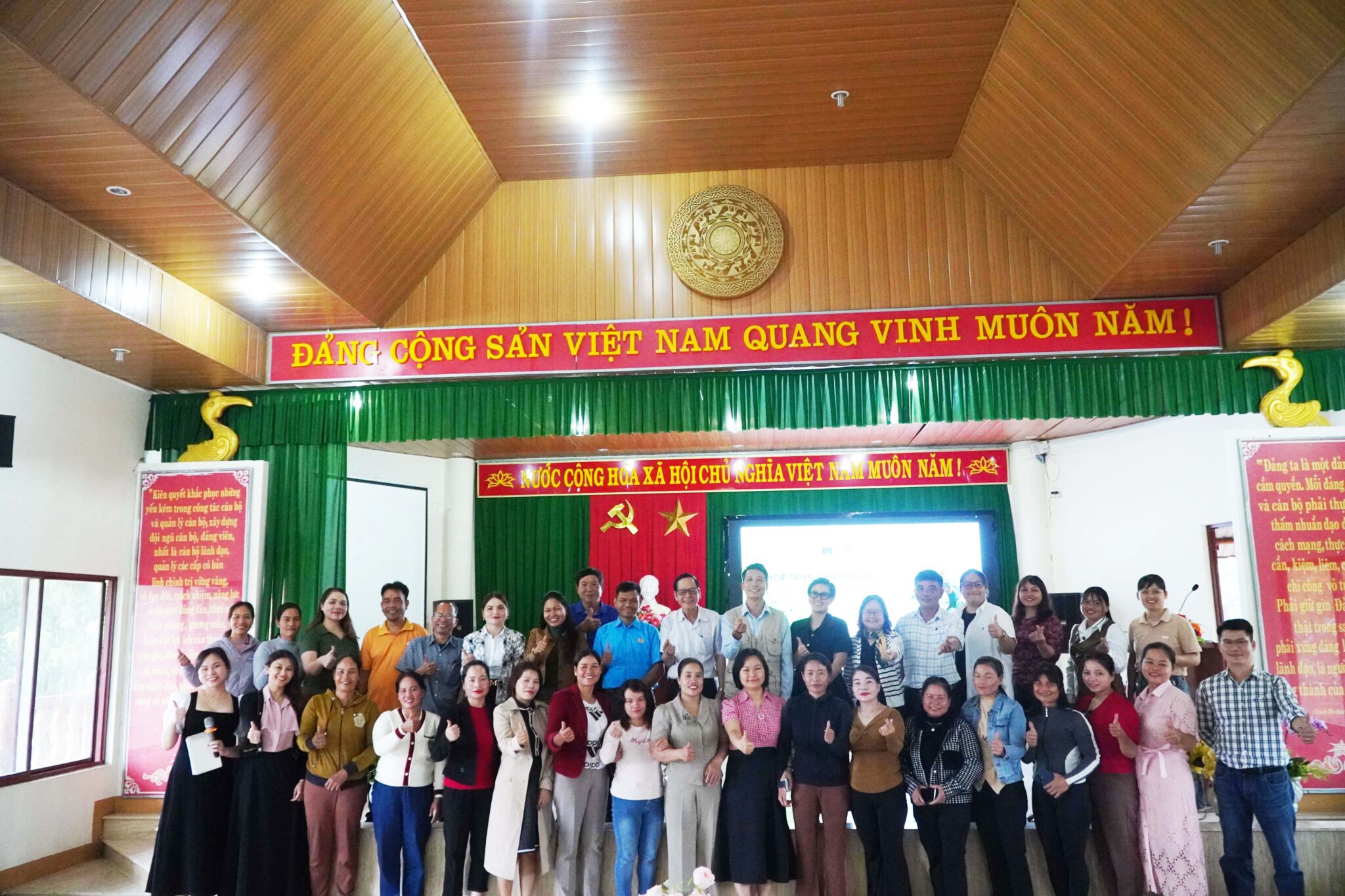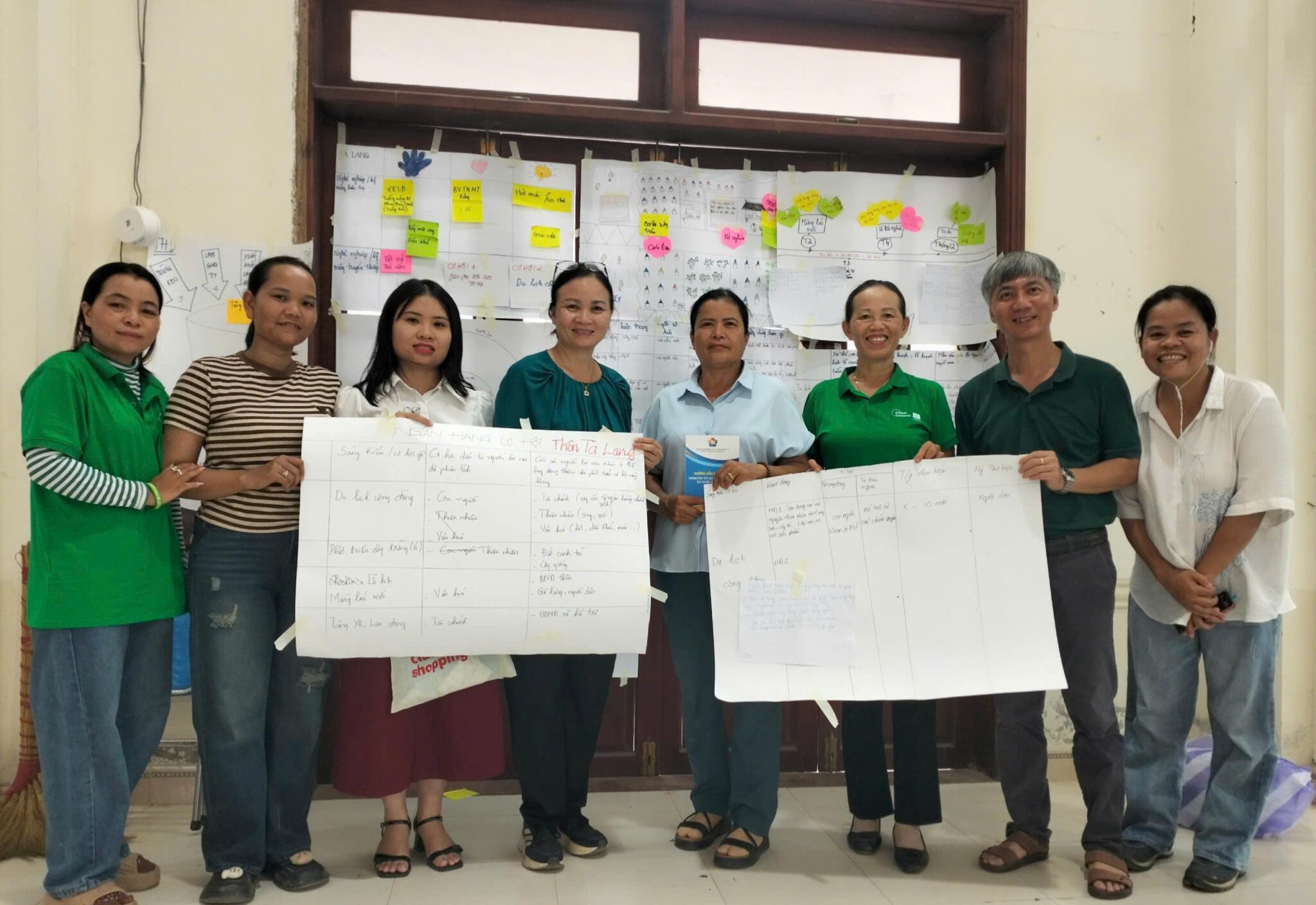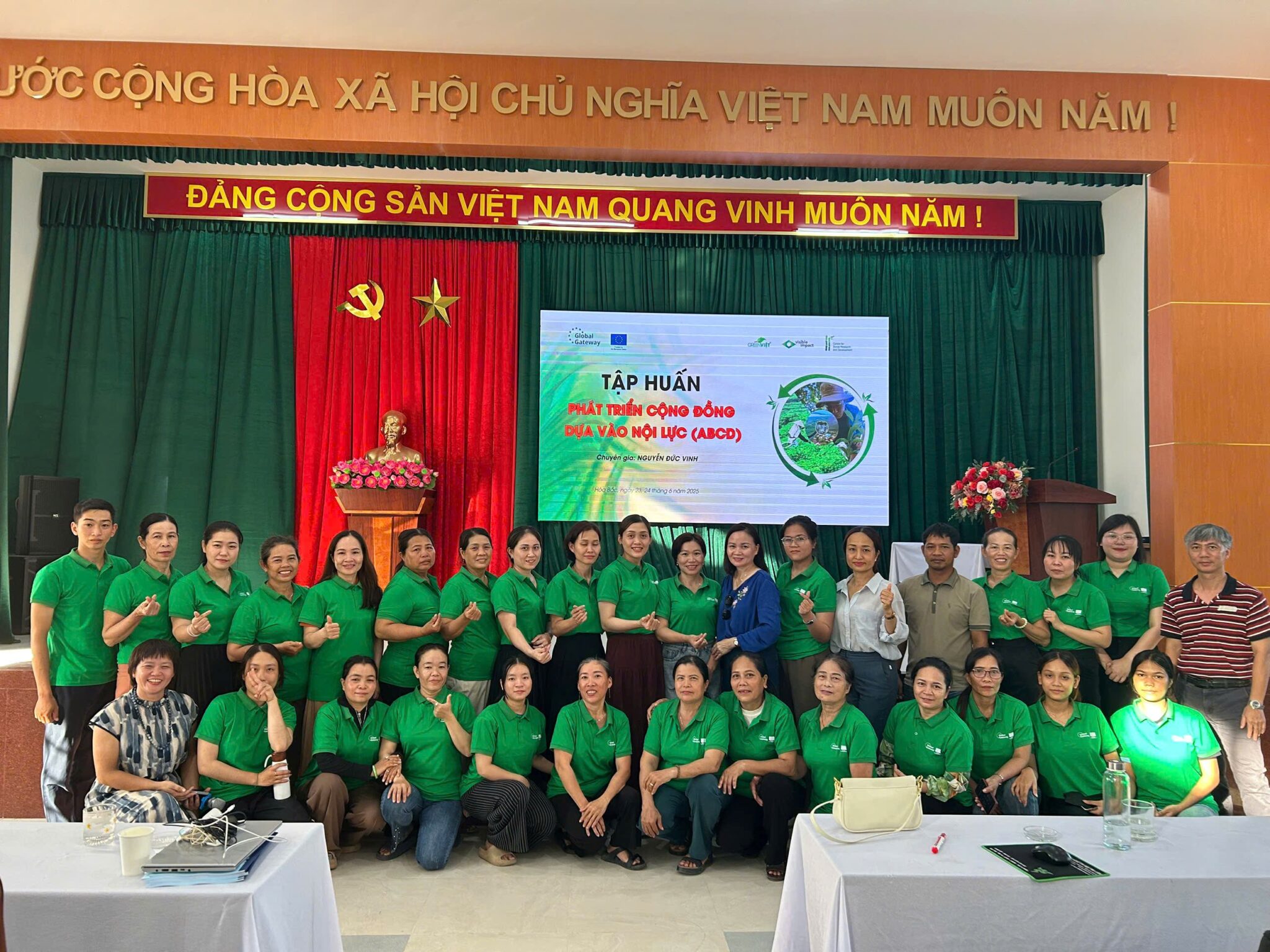On 12 June 2025, the EU‑funded project “Enabling women in Central of Vietnam to improve their lives and protect the environment, natural resources by applying green and circular economy” was formally inaugurated in Tu Commune (now Song Vang Commune, Da Nang city, as of 1 July 2025). Co‑implementing partners GreenViet, Visible Impact, and CSRD first launched the initiative in Da Nang on 14 March 2025. Despite torrential rain from the season’s opening storm, district and commune authorities, DANUSTA representatives and—in particular—members of the Tu Commune Women’s Union and the Bao Binh Cooperative gathered to celebrate the project’s objectives, expected outcomes and participatory approach. A lively Q&A session received many thoughtful questions from local women keen to understand how they might lead local environmental stewardship efforts.

Building on this momentum, from 20 to 26 June, GreenViet, in collaboration with the People’s Committees of Song Vang Commune (formerly Tu Commune), Hai Van Ward (formerly Hoa Bac Commune) and Son Tra Ward (formerly Tho Quang Ward), delivered a series of intensive “Asset‑Based Community Development” (ABCD) trainings. 94 local women—many already pursuing or planning green‑economy enterprises—attended two‑day workshops in each locality. The curriculum spanned an introduction to community development by harnessing existing strengths, six tools for mapping local resources, and guidance on crafting preliminary business models for low‑carbon, circular‑economy ventures.

Participants then applied these insights to propose concrete initiatives. In Song Vang Commune, predominantly populated by the Cơ Tu ethnic group, trainees identified tea‑vine cultivation, forest‑herb teas and green culinary specialities—such as cơm lam and traditional rice‑wine—as promising livelihood activities that both honour cultural heritage and appeal to ecotourists. In Hai Van Ward, women envisaged homestays integrated with orchards and organic gardens, offering immersive visitor experiences. Across all sites, attendees left with not only fresh, basic ideas of green and circular principles but also renewed confidence in their capacity to drive sustainable development in their own communities.
These initial steps underscore the project’s human‑centred ethos: by unlocking women’s latent assets and creativity, Central Vietnamese communities are poised to pioneer locally tailored, environmentally responsible economies.
This project is jointly implemented by GreenViet Biodiversity Conservation Centre (GreenViet, Vietnam) – the lead, Visible Impact (Germany), and Centre for Social Research and Development (CSRD, Vietnam). The project is funded by the Delegation of the European Union to Vietnam.
